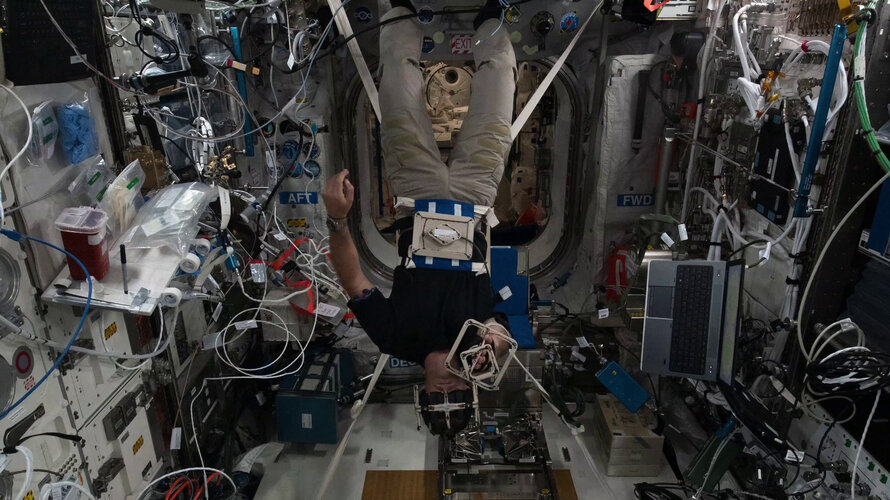
Timelapse video made during ESA astronaut Thomas Pesquet’s second mission to the International Space Station, “Alpha”. The camera is setup to take pictures at regular intervals, the pictures are then played quickly after each other at faster than normal speed.
The video shows Thomas running a session on the Grasp experiment in the European Columbus laboratory.
Grasp stands for Gravitational References for Sensimotor Performance and seeks to better understand how the central nervous system integrates information from different senses, such as sight, sound and touch, to coordinate hand movements and determine what role gravity plays.
How does the experiment work? Mike dons virtual reality (VR) gear that is coupled with a laptop and driven by an audio/graphics system. The VR headset simulates a series of tasks for the him, while a 3D motion tracker updates the display in real time in response to his hand, body and arm movements. Measurements are taken on ground and during spaceflight.
ESA astronaut Thomas Pesquet was the first to use the VR gear to perform the experiment during his 2016 mission.
Researchers suspect that, on Earth, the brain uses gravity as a reference. When reaching for an object, the brain uses visual clues as well as how your shoulder muscles counteract the downward force of gravity to keep your arm straight to calculate the distance between your hand and the object.
However, the sensation of floating for months on end is something our brains did not have to deal with until last century. Seeing how they adapt to this environment offers valuable insight.
Spearheaded by researchers at French national space agency CNES, the study helps us identify the workings of the vestibular system that keeps our balance, and how it connects to the other sensory organs. In other words, Grasp investigates the physiology behind hand-eye coordination, shedding light on how to treat patients showing a loss of vestibular function on Earth.
For astronauts, the research will be useful during spacewalks, where coordination in weightlessness with few visual clues is vital.
Over 200 experiments are planned during Thomas’ time in space, with 40 European ones and 12 new experiments led by the French space agency CNES.
Latest updates on the Alpha mission can be found via @esaspaceflight on Twitter, with more details on ESA’s exploration blog via thomaspesquet.esa.int.
Background information on the Alpha mission is available at www.esa.int/MissionAlpha with a brochure at www.esa.int/AlphaBrochure.
Click here for original story, Thomas grasping in VR space for science
Source: ESA Top Multimedia